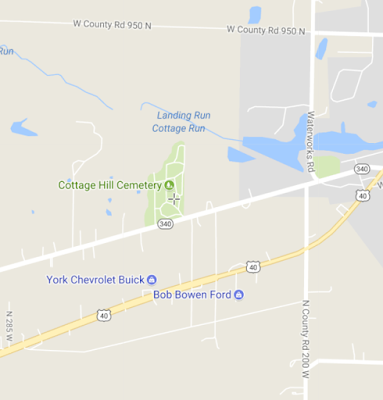As genealogists, knowing where things happened in the lives of our ancestors is vital to being able to learn more about those events. Another great feature of combining technology and genealogical research is the ability to not only find current maps of the places we research, but also historical maps that were created closer to the time period in which we are searching. The David Rumsey Map Collection is an amazing collection of maps that is worth using to gain a sense of place for your research.
The David Rumsey Map Collection, a private collection donated to Stanford University, is a collection of over 150,000 maps from around the world covering a time span mostly from the 16th century to the present. The website for the collection, www.davidrumsey.com, contains over 80,000 images. Viewers have several different options how to interact with the images, such as ordering prints or downloading files (when copyright allows), compiling slide shows or media groups, and overlaying maps to compare between them.
While there are many different viewers available, a good place to start is to use the LUNA Browser. On the homepage look for a link under "Quick Links" on the right side of the page. Read the brief information on the page including a few suggestions on how you can use the images and some tips on how to use the LUNA Browser. Then click on the brown button near the middle of the screen titled, "Launch LUNA Browser."
Within the LUNA Browser is the ability to search the images. In the upper right-hand corner is a search engine. On the left side of the screen are categories that can filter your results. It is sometimes beneficial to use both the search engine and the refining categories. Also along the top of the Browser are options titled Collections, Explore, Create, Share, Embed, Print which you can explore, though not every option is available for every image. It is amazing how many ways viewers are encouraged to use and share these beautiful images.
You can find more than maps showing geographic boundaries. There are railroad maps, waterways, cartoon maps, advertising maps, atlases, and more. Below is a page from a county atlas which included drawings of homes and sketches of individuals.
 |
| Combination Atlas Map Of Yates County New York. Compiled, Drawn and Published From Personal Examinations and Surveys. 1876. David Rumsey Historical Map Collection |
It allowed me to created a Media Group, in which I collected a few images of Washington in different decades. I then chose the Embed option, and it gave me code to create the image box below. Clicking on an image will take you to the website where you can take a closer look and save or share the image.
The features of the David Ramsey Map Collection are too numerous and detailed to cover in one blog post. Take some time to peruse through their holdings. I guarantee you will find some amazing maps to complement your genealogical research.












